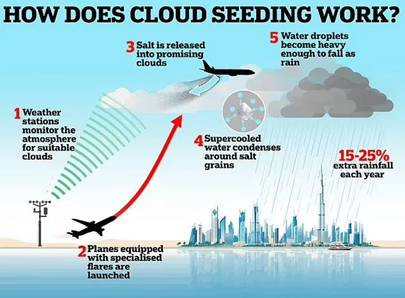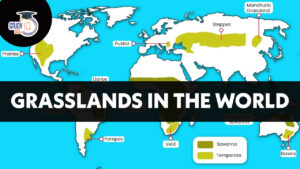Table of Contents
Context: The Delhi Environment Minister has called on the central government to convene an urgent meeting to assess the feasibility of cloud seeding in the capital to tackle pollution levels.
What is Cloud Seeding?
- It is a scientific process that improves a cloud’s ability to make rain or snow, as well as control other weather events.
- Chemicals Used: Silver Iodide, Potassium Iodide and Dry ice (solid carbon dioxide).
Cloud Seeding Methods
Hygroscopic Cloud Seeding
- In this method, Salts are dispersed into the lower parts of clouds using flares or explosives. These salts attract water, causing them to grow larger.
- As the salts increase in size by attracting water, they become heavy enough to fall as rain.
Static Cloud Seeding
- Chemicals like silver iodide are spread into the clouds.
- Silver iodide acts like a tiny ice crystal around which moisture can gather.
- Moisture is already present in the clouds, Silver iodide makes it easy for clouds to turn its moisture into rain.
Dynamic Cloud Seeding
- This method aims to boost vertical air currents, which encourages more water to pass through the clouds, translating into more rain.

How does Cloud Seeding help to reduce pollution?
- Cloud seeding helps in washing away pollutants like sulphur dioxide, nitrogen oxides, and particulate matter.
- Artificial rain increases the humidity in the air. Humidity helps to trap pollutants and prevent them from dispersing thus decreasing air pollution levels.
- Cloud seeding can help disperse smog and haze, making the air clearer and more breathable.


 Grasslands in the World, Map, Types and ...
Grasslands in the World, Map, Types and ...
 Places in News for UPSC 2025 for Prelims...
Places in News for UPSC 2025 for Prelims...
 Earthquake in Delhi: Causes, Impacts and...
Earthquake in Delhi: Causes, Impacts and...





















